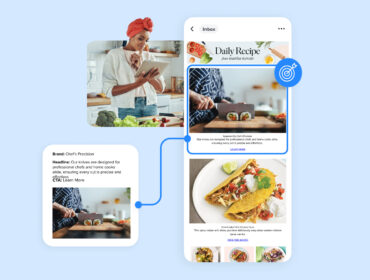When Is a New Revenue Stream Just a Trend?
When a new revenue stream starts to take over the marketing world, it’s hard not to jump on the bandwagon. Those who do can find themselves quickly rewarded with clicks, engagements, revenue, and conversions that seem to just keep coming.
But when that bandwagon tips over or the wheel gets kicked out, publishers and brands are left scrambling to make up for lost ROI and searching for the next viable channel. Even worse, they don’t own their data or audience through that revenue stream, so they’re forced to start from scratch elsewhere.
Just look at Facebook video. Upworthy used this feature to become one of the fastest-growing media sites of all time, only to see its traffic plummet once Facebook started changing its algorithm. Marketers even accused Facebook of inflating video ad metrics by up to 900%. All of a sudden, their tried-and-true revenue channel was a budget-burning wasteland.
The question is: How can publishers and brands prevent this from happening again? How can they tell the difference between a reliable new revenue stream and a too-good-to-be-true advertising trend that could fizzle out at any moment?
We talked to executives from the New York Times, Vox, The Daily Beast to find out.

Follow user demand, not advertiser demand
A major reason why diversification trends – like the pivot to video – fail is because publications jump on them without making sure they align with audience interests and behaviors.
As Mia Lehmkuhl Libby, chief revenue officer of The Daily Beast, says: “Those pivots were not about user demand; they were about advertiser demand and following the money. You have to do that to an extent, but those decisions weren’t really borne out of users saying, ‘My god, I just only want to consume video and 30-second ads! I don’t want to read anything!’ So they were destined for failure.”
In fact, The Daily Beast’s biggest success in revenue diversification has been its membership product.
“We try to read the signals from our audience, and use that to identify if there’s a revenue stream,” says Libby. “The membership model was born out of understanding our audience really well and understanding how deeply loyal and engaged they were with The Daily Beast brand. That was our signal that there was a business there. There was no way to toe-dip into that.”

Stick to your brand editorial
Diversification is important for growth and sustainability in an ever-changing digital marketplace. As eMarketer found, publishers are investing in a range of revenue streams, including display ads, subscriptions, native advertising, events, and ecommerce.
Still, each new channel should fit in with your overall brand message and values. If your mission is to provide readers with long-form, investigative news stories and you suddenly start publishing short and silly cat videos, your audience may grow frustrated and confused.
Vox, for instance, is known for explaining the news, so they worked with advertisers to create branded content in the form of explainer articles.
“We knew that it could be sustainable for our audience,” says Courtney Glaze, VP of revenue for Vox Media. “It’s not a trend; it’s not something that might come and go quickly. Finding those moments where your audience is really engaged and building on that in a way that’s true to your editorial is key.”
Understand the economics and data
As publishers continue to launch new subscription models, many are beginning to wonder if this revenue stream will fail just as others have.
Allison Murphy, SVP of innovation at the New York Times, believes publishers can only avoid that fate by understanding the economic commitment of these new revenue streams.
“With video, the economics never made sense,” Murphy says. “It was expensive and the revenue was coming in all these extremely uncontrolled ways, mediated by platforms. And if I think about the subscription business, publishers have to get smart very fast about the economics. If they don’t, it’s a quick path to losing money.”
Email, on the other hand, is more accessible and it gives publishers owned data like email addresses, which can be used across platforms and channels — wherever people log in, subscribe, or sign up.
As Kerel Cooper, SVP of global marketing at LiveIntent, says: “Our publisher partners have always recognized us as a source for email monetization, but now they’re coming back and saying, ‘How can you help us grow our audience and better understand our audience?’ As we talk about revenue diversification, these goals fit squarely into it, regardless of what product you’re offering.”
—




